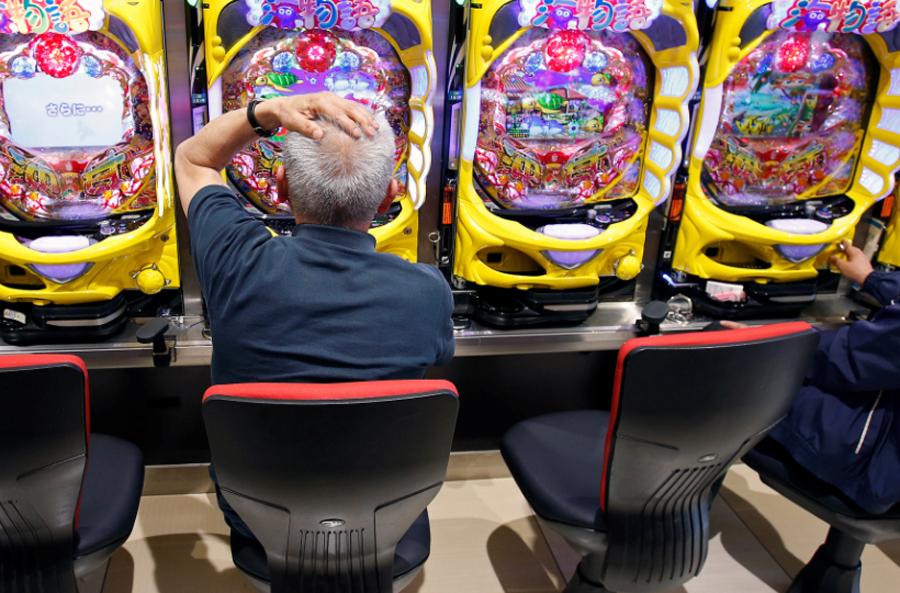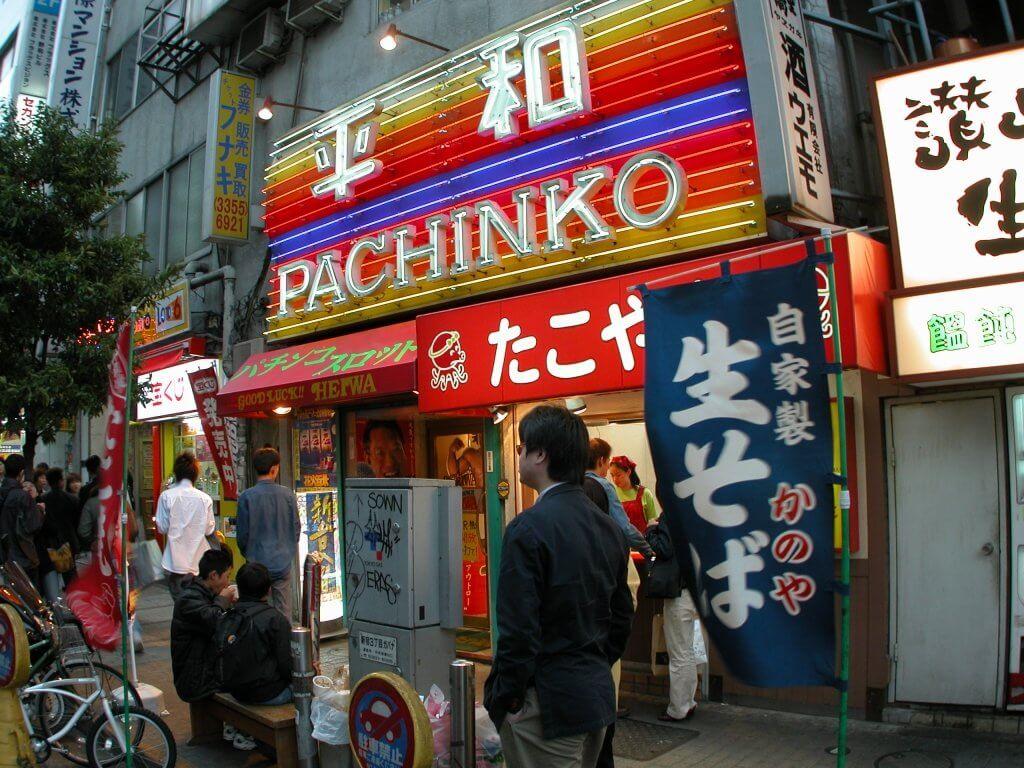Pachinko is a game that defies easy categorisation. Found throughout Japan, from bustling train stations to lively retail strips, these gaming parlours are an integral part of the nation’s cultural landscape. Despite being a form of entertainment that closely resembles gambling, pachinko maintains a distinct identity.
This article explores the phenomenon of pachinko, tracing its history, mechanics, cultural significance, and the controversies surrounding it. If you are interested in gambling, we recommend you to follow reliable services such as safe international betting sites for UK’s, here you can not worry about the safety of your data and enjoy games and predictions.
A Brief History of Pachinko
Pachinko’s origins can be traced back to the late 17th century with a game called Bagatelle, a precursor to pinball. It evolved over centuries, becoming “Corinthian Bagatelle” before making its way to Japan in the 1920s, where it was adapted and renamed “Pachinko.” The game quickly became popular among adults and children alike, with the first dedicated parlour opening in Nagoya in 1930. However, the industry faced setbacks during World War II, with parlours closing to support the war effort. After the war, the industry experienced explosive growth, becoming a national obsession by the 1950s.
How Pachinko Works
Pachinko machines, an iconic feature of Japanese entertainment, uniquely combine the mechanics of slot machines and pinball into a compelling game of chance and skill. Players start by purchasing a tray of small steel balls, which they then load into the pachinko machine. The machine propels these balls onto a playfield dotted with numerous pins. The primary objective is for players to navigate the balls into designated slots that activate a payout mechanism, rewarding the player with additional balls. This mechanism is crucial, as the number of balls won directly translates into the player’s success in the game.
The unique twist in pachinko is how these winnings are utilized. Instead of a direct monetary reward, players exchange their accumulated balls for prizes or special tokens at the parlour. These tokens can subsequently be exchanged for cash at separate establishments, cleverly circumventing Japan’s stringent gambling laws. This roundabout way of rewarding players contributes to pachinko’s classification as an amusement rather than outright gambling.
The Experience of Playing Pachinko
 Stepping into a pachinko parlour is an assault on the senses in the best possible way. The atmosphere is electric, characterised by bright, flashing neon lights, the pervasive scent of cigarette smoke, and a constant cacophony of electronic music mixed with the sounds of machines and chatter. Players sit in rows, each engrossed in their game, manipulating the machines to guide the balls into the winning slots. Modern pachinko machines elevate this experience further, incorporating digital screens that display elaborate animations and offer various interactive elements, making each game a unique adventure.
Stepping into a pachinko parlour is an assault on the senses in the best possible way. The atmosphere is electric, characterised by bright, flashing neon lights, the pervasive scent of cigarette smoke, and a constant cacophony of electronic music mixed with the sounds of machines and chatter. Players sit in rows, each engrossed in their game, manipulating the machines to guide the balls into the winning slots. Modern pachinko machines elevate this experience further, incorporating digital screens that display elaborate animations and offer various interactive elements, making each game a unique adventure.
The Industry and Its Controversies
Pachinko is not just a game in Japan; it’s a colossal industry, contributing significantly to the nation’s economy. Yet, its operation within a legal grey area makes it a subject of contention. The game’s resemblance to gambling is unmistakable, yet officially, it is categorized under amusement activities. This classification enables pachinko parlors to flourish across Japan, despite the prohibition of casino-style gambling. However, this has also made the industry a breeding ground for controversies, particularly concerning its association with organized crime and the adverse social impacts attributed to gambling addiction.
The Yakuza Connection
Historically, the pachinko industry has had undeniable connections with the Yakuza, Japan’s infamous organized crime syndicates. The Yakuza would take a portion of the parlours’ profits, entangling the game in a web of criminal activities. Recent years have seen a significant reduction in this association, thanks to rigorous police actions and the imposition of stricter regulations. Despite these efforts, the shadow of pachinko’s past dealings with the Yakuza lingers, affecting its public perception.
Addiction and Social Issues
Pachinko’s addictive nature has been the focal point of widespread societal concern. Stories of financial despair, addiction, and even instances of child neglect have spotlighted the darker side of this national pastime. In response, many pachinko parlours have implemented policies to mitigate these issues, such as banning children from the premises and introducing childcare facilities, in a bid to foster a more responsible gaming environment.
Pachinko in Modern Japan
In the face of dwindling parlour numbers and a decrease in player engagement, the pachinko industry has been compelled to innovate. Efforts to rejuvenate the industry have seen the emergence of parlours that are more inviting to a new generation of players. These modern establishments focus on creating a welcoming atmosphere with cleaner environments, quieter machines, and lower-stakes games, making pachinko accessible and enjoyable for a broader audience.
The Future of Pachinko
The legalization of casino gambling in Japan represents a significant challenge to the traditional pachinko parlour. Anticipating a potential decline in their customer base, the industry is lobbying for legislative changes that would allow for direct cash payouts within the parlours, a move aimed at solidifying Pachinko’s standing in the rapidly evolving Japanese gaming landscape. Despite these uncertainties, pachinko parlours continue to innovate, ensuring that this quintessentially Japanese form of entertainment remains a staple for both loyal enthusiasts and curious newcomers alike.
Conclusion
Pachinko stands out as a uniquely Japanese form of entertainment, balancing on the fine line between amusement and gambling. Its rich history, the excitement it offers, and its cultural significance make it much more than a simple game. Despite facing numerous challenges and controversies, pachinko continues to evolve, adapting to the changing tastes and demographics of its players. As Japan’s gaming landscape shifts, pachinko’s clang and flash remain an enduring symbol of leisure and luck.
FAQ
What is Pachinko?
Pachinko is a popular game in Japan that combines elements of slot machines and pinball. It’s played in parlours throughout the country and involves using small steel balls to win prizes.
How does pachinko work?
Players buy a tray of steel balls and launch them into a machine where they navigate through pins to land in specific slots. Winning slots reward the player with more balls, which can be exchanged for prizes or tokens.
Is pachinko considered gambling?
Officially, pachinko is classified as an amusement activity in Japan and not gambling. This classification allows pachinko parlours to operate despite Japan’s laws against casino-style gambling.
What makes pachinko parlours unique?
Pachinko parlours are known for their bright neon lights, the sound of music and machines, and vibrant atmosphere. Modern machines also feature digital screens with animations.
Has pachinko been linked to organized crime?
Yes, historically, the pachinko industry had connections with the Yakuza, Japan’s organized crime syndicates. However, recent crackdowns and regulations have significantly reduced this association.
Are there concerns about addiction to pachinko?
Yes, pachinko’s addictive nature has raised concerns regarding gambling addiction and social issues, such as financial despair and child neglect. Parlors have implemented measures to address these concerns.
How is the pachinko industry changing?
The industry is innovating by creating parlours that are more welcoming to a new generation, with cleaner environments and lower-stakes games. Additionally, it faces challenges from the legalisation of casino gambling in Japan.









































